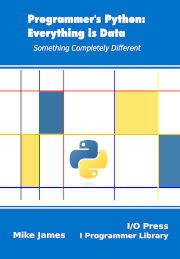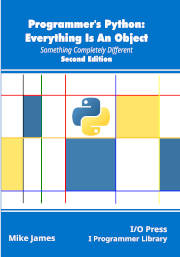Raspberry Pi IoT in C Third Edition
Errata None
Resources
Program Listings
Book Page For First Edition: Raspberry Pi IoT in C First Edition
Book Page For Second Edition: Raspberry Pi IoT in C Second Edition
- ISBN-13 : 978-1871962840
- ISBN-13: 978-1871962154
- ASIN : B0CS2LRPSS
Buy from: Amazon
Reviews of the previous edition:
"A complete explanation that makes it straightforward to interface I/O options to the Pi. Good examples are easy to follow and well explained - starting with "Hello World" and then walks through the various interface options available with GPIO. I highly recommend this to anyone using the Pi for any embedded system application requiring various types of interfaces."
"This is the book to read to get deep into Raspberry IoT. Programming examples are provided. Great book!"
The Raspberry Pi makes an ideal match for the Internet of Things. But to put it to good use in IoT you need two areas of expertise, electronics and programming and, because of the way hardware and software engineering tend to occupy separate niches, you may need help with combining the two which is the role of this book.
This 3rd Edition was prompted by the arrival of the Pi 5. Unfortunately, as the Pi 5 uses the new RP1 chip to implement its peripherals, it is incompatible with all of the IoT libraries that work directly with the hardware. As a result it is excluded from much of this book. A whole chapter is, however, devoted to getting started with an IoT project with the Pi 5 and it is also covered in chapters on the Linux GPIO driver and on the use of the Pi’s serial ports and in a chapter, which describes how to access the Pi 5’s registers directly.
What is more important than the Pi 5 from the point of view of IoT is the Pi Zero 2W, which is a much faster, quad-core, version of the Pi Zero W making it an excellent choice for IoT projects. It is covered for the first time in this edition. Another reason for a new edition is to update its programs to the new versions of Pi OS, Bookworm and Bullseye. Finally, a major change is that VS Code is now the book’s IDE of choice and to make it easy to use as a remote development environment with all versions of Pi from Pi Zero to Pi 5, a set of custom VS Code tasks are supplied, which are downloadable as well as included in the book.
The main idea in this book is to work directly with the hardware using the Raspberry Pi's GPIO (General Purpose Input Output) to connect with off-the-shelf sensors. After reading it you will be in a better position to tackle interfacing anything-with-anything without the need for custom drivers and prebuilt hardware modules.
Harry Fairhead has worked with microprocessors and electronics for many years and is an enthusiastic proponent of the IoT. C is his programming language of choice and he has written several books on programming the Raspberry Pi and other devices in an IOT context, including Raspberry Pi IoT in C With Linux Drivers, Second Edition, Programming the ESP32 in MicroPython and Fundamental C: Getting Closer To The Machine. Currently, his most popular title is Programming the Raspberry Pi Pico/W in C.
Paperback
Publisher : I/O Press (January 9, 2024)
Language : English
Paperback : 424 pages
ISBN-10 : 1871962846
ISBN-13 : 978-1871962840
Item Weight : 1.62 pounds
Dimensions : 7 x 0.96 x 10 inches
Hardback
Publisher : I/O Press (January 10, 2024)
Language : English
Hardcover : 424 pages
ISBN-10 : 1871962153
ISBN-13 : 978-1871962154
Item Weight : 2.01 pounds
Dimensions : 7 x 1.15 x 10 inches
Kindle
ASIN : B0CS2LRPSS
Publisher : I/O Press; 3rd edition (January 10, 2024)
Publication date : January 10, 2024
Language : English
File size : 17553 KB



